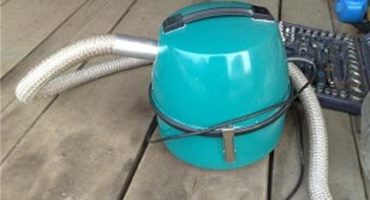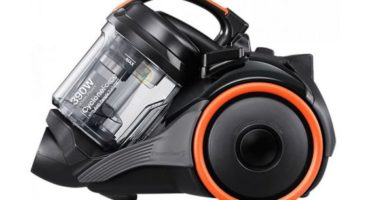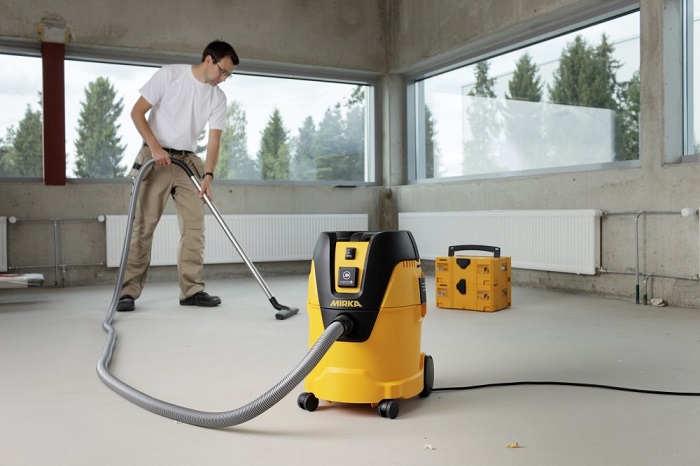
Industrial vacuum cleaners are designed for cleaning construction debris, as well as for cleaning industrial premises from specific debris, such as wood or metal shavings, concrete dust and other contaminants. Industrial often referred to as construction, work on the principle of household models. They differ from the latter in high engine power, which means their ability to absorb heavier wastes (such as broken pieces of cement).
The advantages of industrial models include high performance and the availability of specialized filters that can sift not only large debris, but also fine dust of various origins.
There are shortcomings: all of them relate to the design features or the specifics of the filter element arrangement - some branded manufacturers, trying to attract more buyers, took the path of minimizing structural and other shortcomings, using feedback from customers and best practices in the development of industrial devices to improve.
Popular brands: Flex, Mirka, Hanko, Rupes are well-known companies with a rich history. p>
Technical features of construction vacuum cleaners
The discharged state of the air inside the device, or in other words, the reduced pressure due to which objects are pulled inward, is created by an electric motor, on the output shaft of which a turbine is located. The latter creates a vacuum due to the presence of an impeller with backward curved blades (when ventilated, they are curved forward). To increase the power of models connected to a single-phase (household) power supply network, up to 3 turbines are installed, coupled with three single-phase electric motors. If you work in a workshop equipped with a three-phase supply network, from which you can obtain the required power without the use of additional tricks, one turbine is installed, the impeller of which is interfaced with a three-phase electric motor. The case of an industrial vacuum cleaner can be made of steel or high-strength plastic, resistant to mechanical stress and the negative impact of aggressive environments. All industrial vacuum cleaners are equipped with a filter element that works on the principle of an automobile filter.
Additionally, technical solutions such as:
- a swirl chamber with a rotating foam layer, effective when it is necessary to clean from gases;
- a chamber for hitting an air stream against a water barrier;
- centrifugal precipitator.
Vacuum cleaner manufacturers are paying more and more attention to plastic for the production of body parts, as a modern and lighter material, which ultimately significantly reduces the final weight of the device.
How to choose an industrial vacuum cleaner
The market is filled with commercial offers for an industrial vacuum cleaner. Unfortunately, not all manufacturers are able to offer quality products that are assembled taking into account European or American standards. To understand the assortment and make the right choice you will be helped by the rating of industrial vacuum cleaners compiled by us in 2019. The rating includes both unprofessional budget models and professional ones.
Top 10 construction vacuum cleaners of 2019
HANKO VC-25L
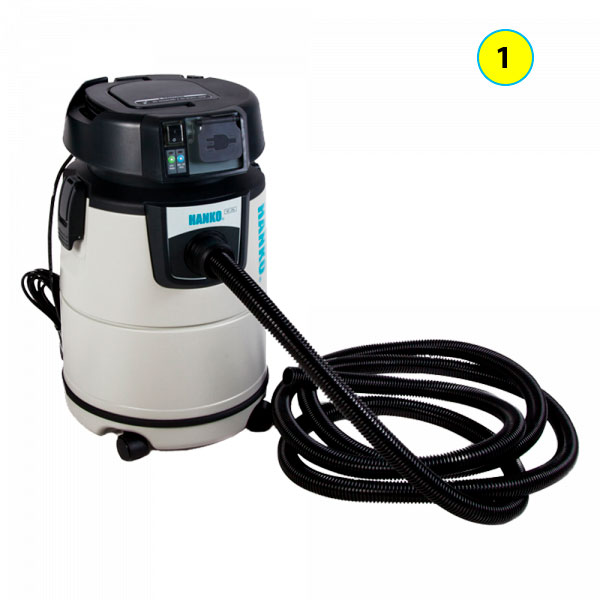
The first place in our rating is occupied by the industrial vacuum cleaner HANKO VC-25L
Automatically turns on when connecting equipment: drilling, grinding, cutting. It has an increased suction power of 1150 watts. The optimal solution for use on a construction site, in the automotive industry, in the workshop.
Advantages:
- simple operation;
- noiselessness;
- high efficiency;
- reliability.
Disadvantages: no.
FLEX VSE M AC Air
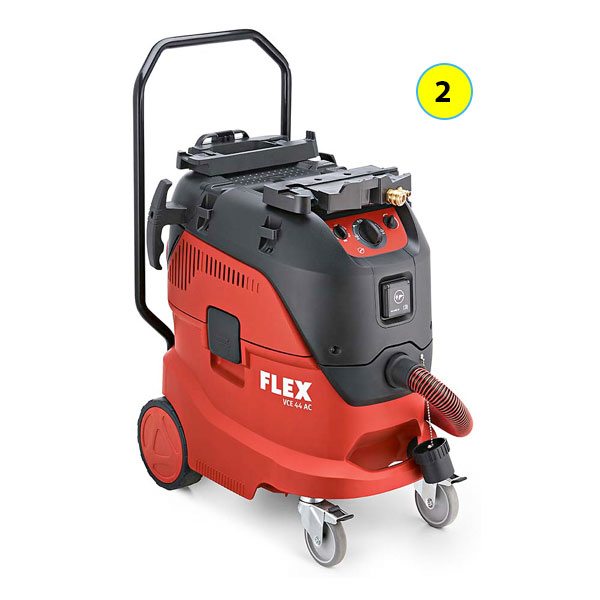
Professional tool for cleaning construction and industrial debris. The maximum engine power is 1400 watts. Effective in the assembly of dry and wet wood and concrete dust.
Advantages:
- powerful turbine;
- automatic filter cleaning (no need for constant replacement);
- high performance;
- rugged case.
Disadvantages:
- not yet discovered.
Mirka DE 1242 M AFC 230V

Professional device for efficient cleaning. Power 1200 watts. With compact dimensions, it has a capacious tank volume of 42 liters.
Advantages:
- maneuverability;
- self-cleaning filter;
- high degree of absorption;
- air flow sensor.
Disadvantages:
- not yet discovered.
Rupes S 130PL
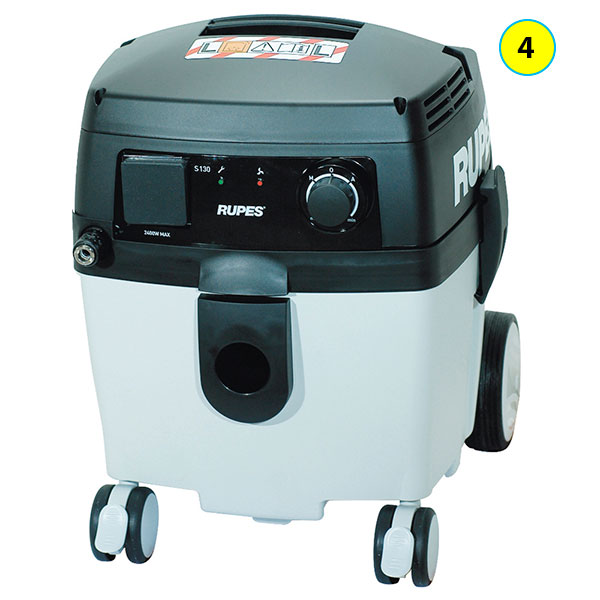
It copes well with the removal of products obtained by grinding various surfaces (for example, concrete). Ability to connect air / power tools. Power - 1200.
Advantages:
- warning of brush wear;
- work with hoses of various diameters;
- 2 filtering elements (cartridges);
- low noise level;
- autorun;
- performance monitoring.
Disadvantages:
- not detected.
Metabo ASA 25 L PC

A powerful tool for cleaning. You can carry by holding the hose - the latter does not break off the load. Power 1.3 kW. Big wheels provide high passability.
Advantages:
- affordable price;
- convenient fastening of hoses.
Disadvantages:
- does a poor job of collecting concrete dust;
- the filter requires constant replacement when cleaning concrete dust.
Bort bss-1010
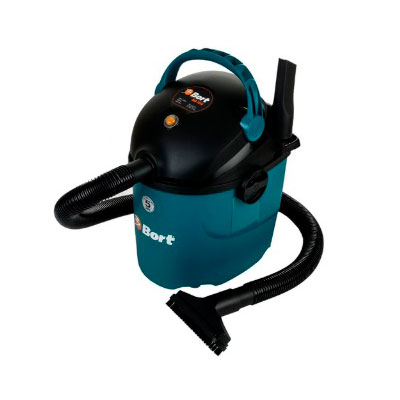
Power 1 kW and the ability to switch cleaning modes. There is a steam cleaning function.
Advantages:
- low price;
- power.
Disadvantages:
- flimsy plastic.
- when cleaning on the street or at a construction site, the filter is clogged.
Makita VC2512L

Compact vacuum cleaner with an electric motor power of 1 kW. Allows you to additionally connect electrical equipment or power tools with a total capacity of 2.6 kW. A distinctive feature is a long hose -3.5 m, auto-cleaning of the filter element. The size of the filtered particles is less than 1 micron.
Advantages:
- lightweight, compact 38x40x53 mm;
- powerful;
- sockets for add. equipment;
- dry / wet mode.
Disadvantages:
- metal tubes accumulate static and periodically shock;
- slow response at startup.
Bosch GAS 20 L SFC

The model has similar specifications with the previous Makita VC2512L. The Bosch vacuum cleaner is equipped with a more powerful electric motor - 1.2 kW, which increases its working efficiency and makes it more productive.
Advantages:
- reliable, powerful;
- more durable body;
- self-service removable filter.
Disadvantages:
- high price.
Karcher WD 3 Premium

It has a longer hose - 2 m. It can be used as not only an industrial vacuum cleaner, but also a home one. Power -1000 watts.
Advantages:
- reduced noise level;
- light weight;
- high-quality cleaning of construction waste.
Disadvantages:
- short network cable;
- small waste bin capacity.
MIE Ecologico Maxi

An interesting model for 1 kW. The function of deodorizing air, dust is effectively deposited in the water container of the vacuum cleaner. Model for industrial / home use.
Advantages:
- powerful;
- saves energy;
Disadvantages:
- unsuccessful design of a container for draining water.
When buying, pay attention to the protection class
High-quality industrial vacuum cleaners are equipped with high-quality filter elements of a large area made of polyester. These filter elements can filter dust of various sizes: L class (up to 3 microns) or M class (up to 1 micron). If you need ultra-clean air in the room, install HEPA filtration, capable of providing filtration up to 99.999%.
In compiling the review, the following characteristics were taken into account: power, functionality, noiselessness, equipment, brand name.

